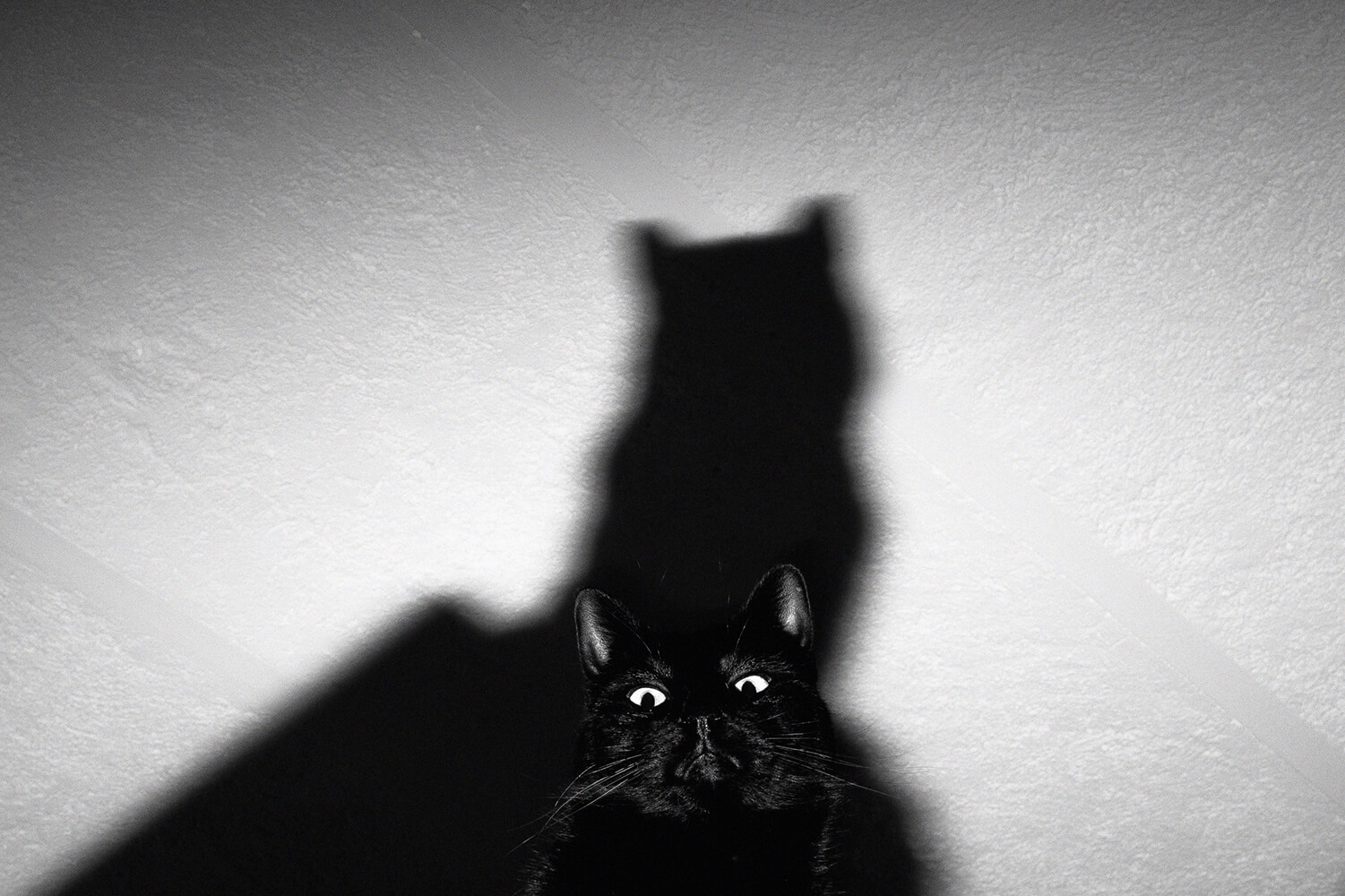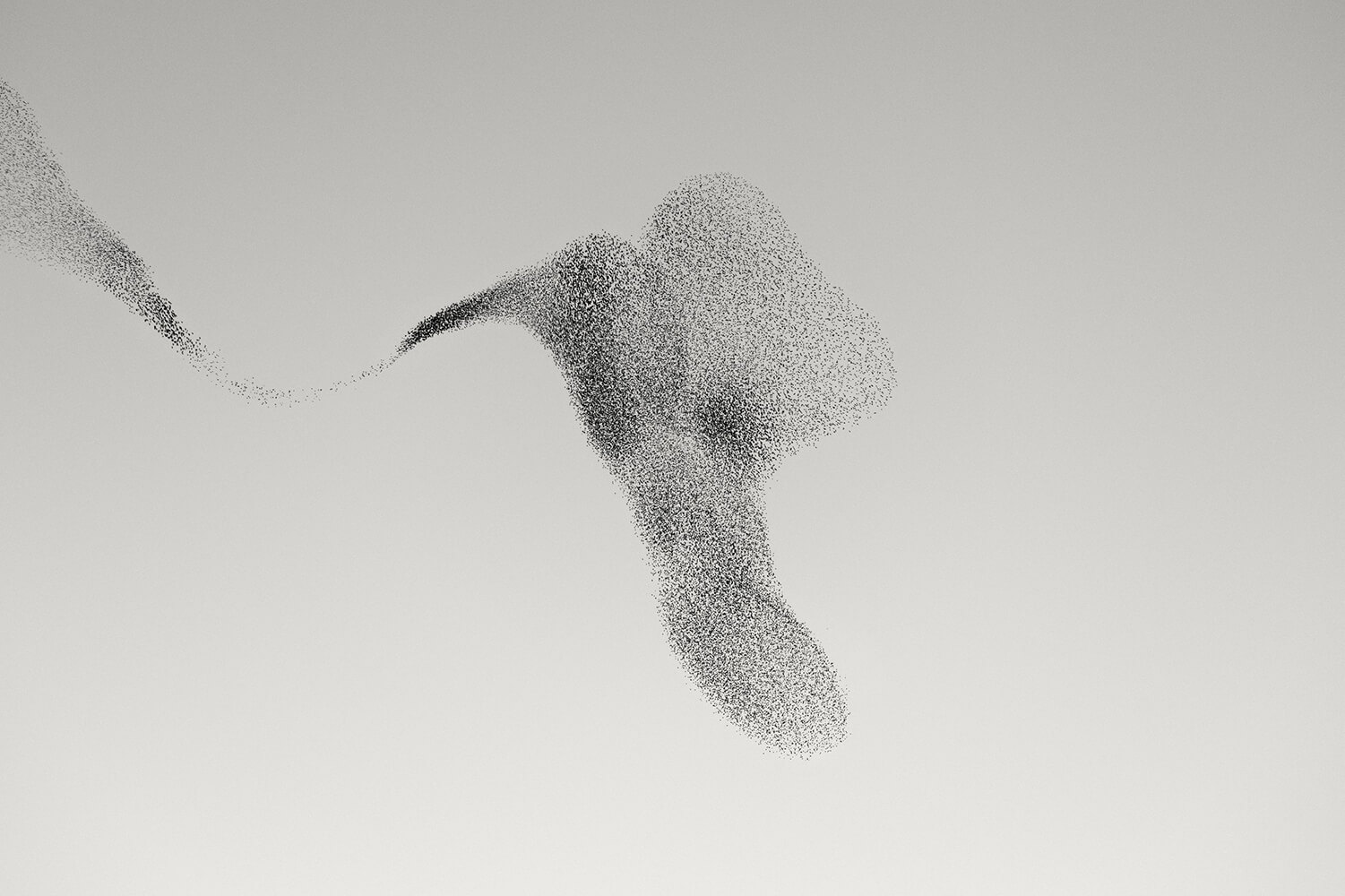“ANIMAL
KINGDOM”
ANNOUNCING THE WINNERS
“When we look at nature, we see ourselves.” – Elliot Connor
We’re delighted to present the results of our February competition judged by fine art photographer Simen Johan.
For this competition we asked you to explore animal life – exotic or domestic, wild or tamed, out in nature or sharing our urban spaces. Simen Johan has made a career in exploring the immense beauty and complexity of the animal world, and so it is no surprise that we see those themes in this selection – the vast, organic patterns of murmurations, horses at full gallop, the quiet elegance of a sealion blowing bubbles… And yet there is more at play here. We see animals being cared for, animals as the victims of our wicked games, animals as artifacts, animals navigating the destruction of habitats, and animals as the products of genetic engineering to name but a few. The above quote is true – when we examine the animal kingdom and our impacts on it, we see the best and worst of humanity.
Here we see the work of twenty talented photographers telling stories worth hearing, in creative and considered ways. We invite you to dive in and explore these stunning examples of contemporary photography that capture the majesty of the creatures that share our planet Earth, acting as a reminder of just how special our shared ecosystems are.
Congratulations to the selected photographers, and thank you to everyone who submitted. You can join the discussion on Facebook and Instagram.
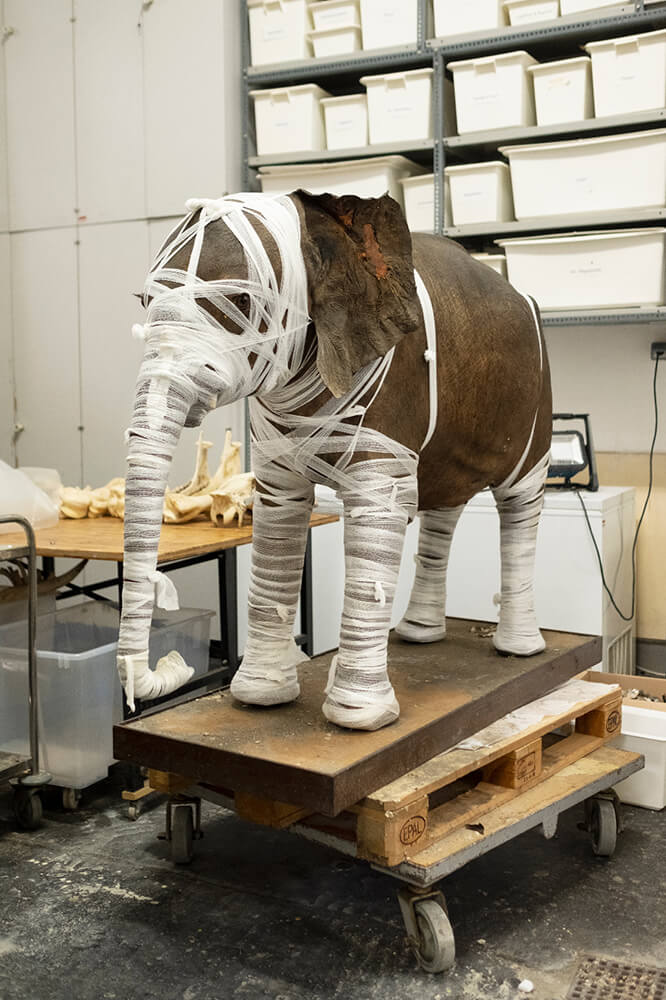
“I like the metaphor of the package wrap as bandage, evoking the fragile state of elephants in the wild—facing extinction, and the museum as a place of preservation. Maybe one day the museum will be the only place we can see this creature. The image also has a nice subtle color palette and good composition, lots of lines and interesting bits and pieces of information in the background directing your eye around the image.” – SIMEN JOHAN
Photographer statement – “Baby elephant in preparation in the taxidermy department of the Natural History Museum of Wien, Austria.”
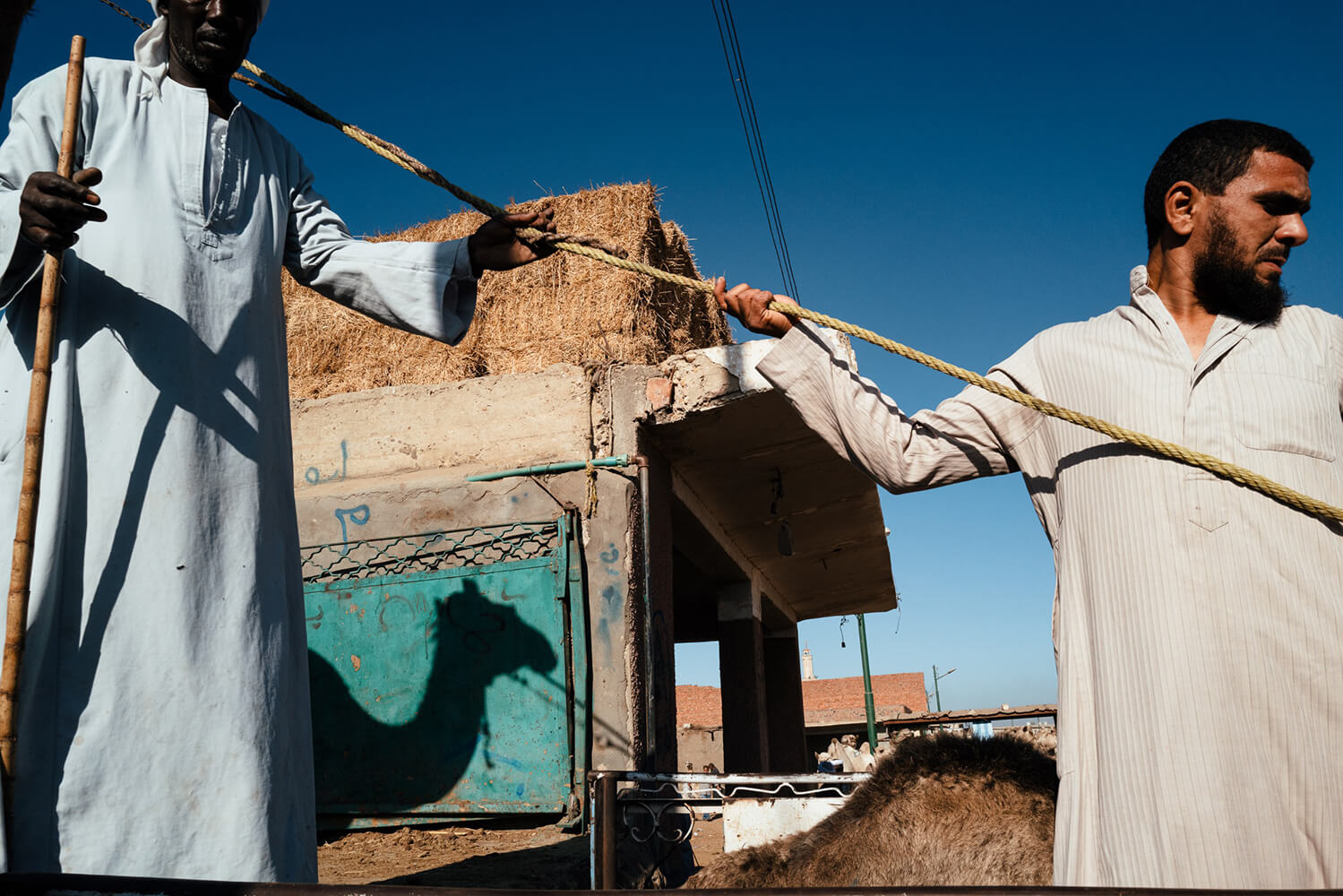
“As a portrait of a camel, this image is clever. Although you can only see its shadow, which adds mystery, the strong contrast between the black shadow and the aqua square it falls on, draws your eye there, making it the focus of attention. Nice diagonals, shapes, patches of black and balance between cold and warm color tones.” – SIMEN JOHAN
Photographer statement – From the series Cairo: A Beautiful Thing is Never Perfect. “Foreshadow – Two men load a camel into a truck at the end of a day of trading at the weekly Birqash camel market in Birqash, Egypt, about an hour drive from Cairo. Traders from Sudan, Somalia, and all over Egypt come to this market that happens once a week.”
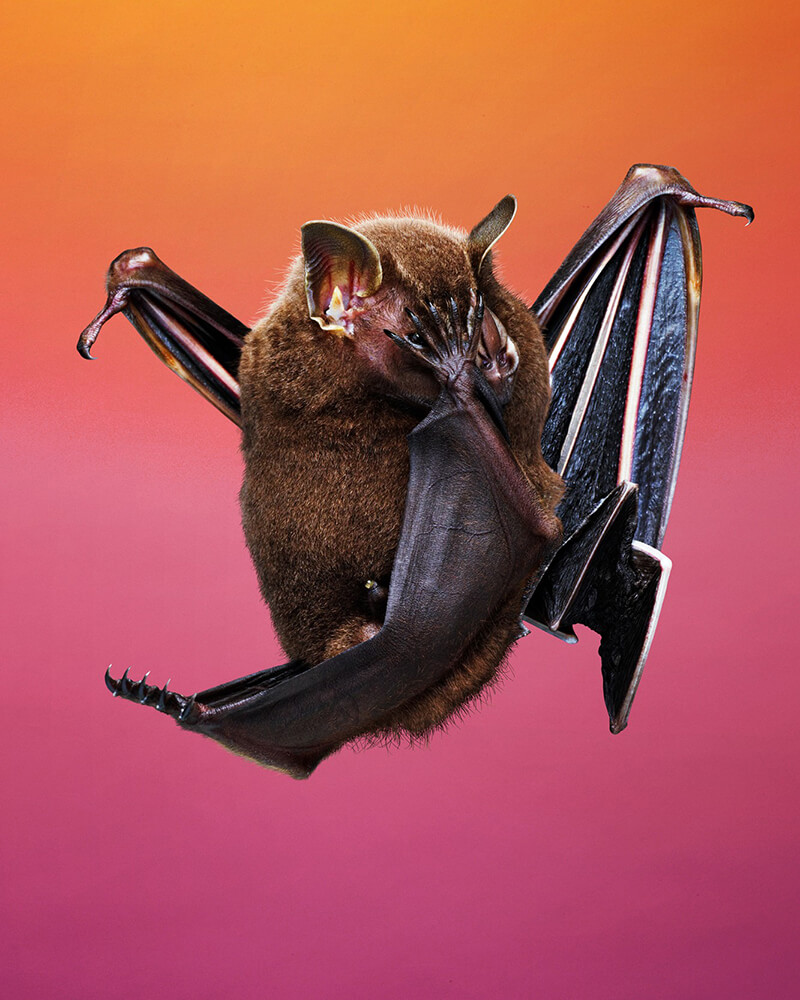
“The title of Erwan’s image – “Bat 8, 2012-2014” – doesn’t give anything away in terms of context… are we looking at a live animal, or a museum exhibit? Nocturnal, timid and incredibly fast, it’s rare to see a bat at this level of detail, and so there’s something wry in how it seemingly peaks back at us coyly through the gaps between its toes. Its soft, downy fur; taut, leathery wing membrane; the ridges of its ear… every detail is there to be poured over, and the whole is beautiful or unnerving, depending on your perspective. The bright background gradient gives the image a contemporary feel, elevating it beyond a traditional document and into something artistic and fully sensory. Brilliant, intriguing work.” – LIFE FRAMER
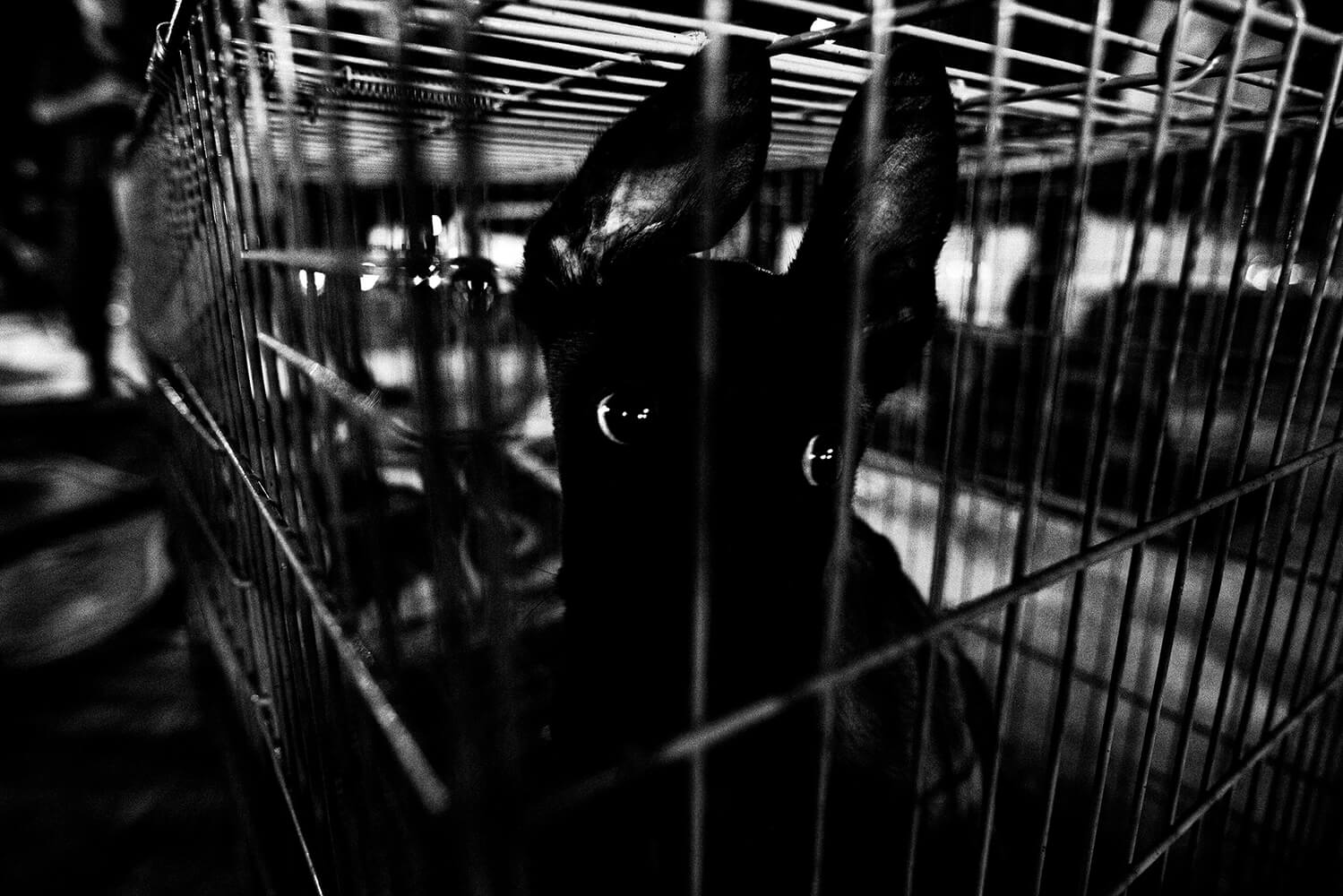
“Taken from a series exploring the changing perceptions of dogs in Iraq, the context for this image is unclear, but we might assume it’s a stray that has been rescued, or a pet awaiting veterinary treatment. Choosing to work in black and white and with a shallow depth of field, Jarmila draws all attention onto the bright, wide and dewy eyes of this puppy in a cage. Its apprehension is palpable – its unknowing of the situation mirroring that of the viewer. Are better things ahead? We hope so. The many facets of dog life in Iraq is a fascinating topic, and this is an engrossing and emotive image.” – LIFE FRAMER
Photographer statement – From the series Dogs are (Not) Haram in Iraq. “The majority of Muslims see dogs as dirty animals. But it wasn’t always like that. Based on historical sources dogs helped their owners to protect animals like sheep or goats. They also helped prevent herds from running away or guarded them from predators. They also played a very important role during hunting expeditions. Many of the world’s largest cities in the millennium between 700 – 1700 belonged to Muslims. Dogs were very helpful in that time, because in addition to protecting property they also ate garbage on the streets. From Damascus and Baghdad to Cairo and Istanbul, dogs were supported as consumers of waste to keep city streets clean.
But the situation began to changed approximately two hundreds years ago. Many diseases were associated with a large amount of waste and poor hygiene. And those who ate the garbage, the dogs, also rode with it. It did not last long and at the beginning of the nineteenth century in general, people began to look at dogs as dirty, disease-transmitting, and dangerous animals. However, as we can see in today’s Iraq, dogs are becoming more and more popular, especially among people from higher social classes. More and more veterinary stations and even salons for dogs are opening in the capital. But it will probably take long time for the dogs to cleanse themselves of the unfair reputation.”
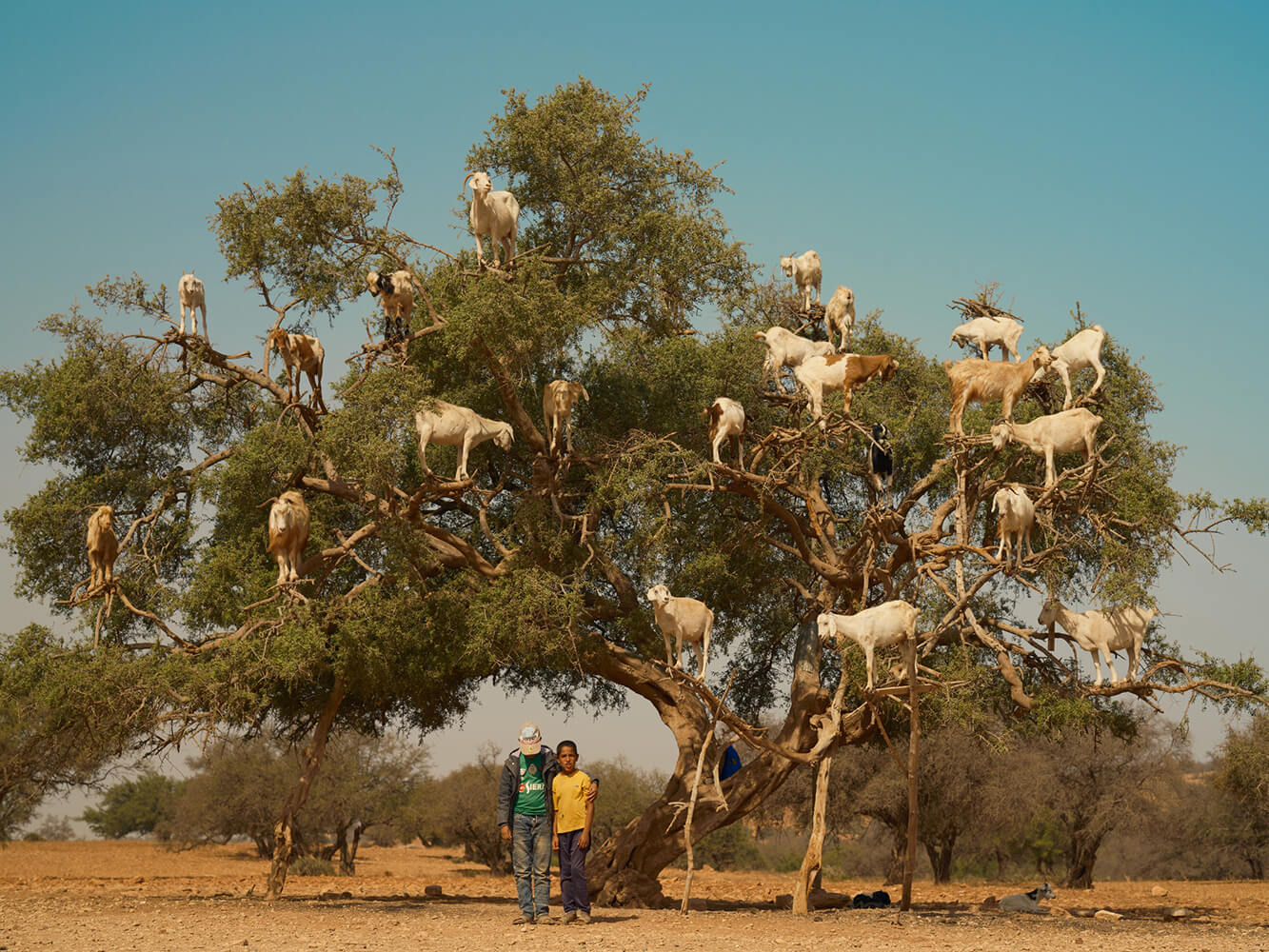
“This might look like a photo composite or digital trickery, but these resourceful, gravity-defying goats are real – climbing to great heights in search of the berries of this Argan tree. It’s surely one of the most unexpected phenomena of the animal kingdom but there’s good reason for it – the goats crave these fruit and humans create platforms in the trees to help the goats reach them as the nuts they excrete contain a coveted oil used in cosmetics and food products. It’s an example of a symbiosis between man and animal that is increasingly under threat from our modern world. Posed under this tree and their herd, there’s a symbolism to the way the boys pose – one looking forward, the other with his head bowed – illustrative of the context Gajan describes in his statement.” – LIFE FRAMER
Photographer statement – “Captured a few hours west of Marrakech, the boys in this image represent an endearing Berber community that’s persevering through the lingering effects of a global pandemic. The goats sit atop the boys in this image and remind me of their importance to this family’s future. As tourism steeply dropped in this part of the country and access to clean water, housing, and education suffer, these animals serve an even more critical role in allowing these boys to move forward. And so I’m left with the question, is it man or nature really in charge?”
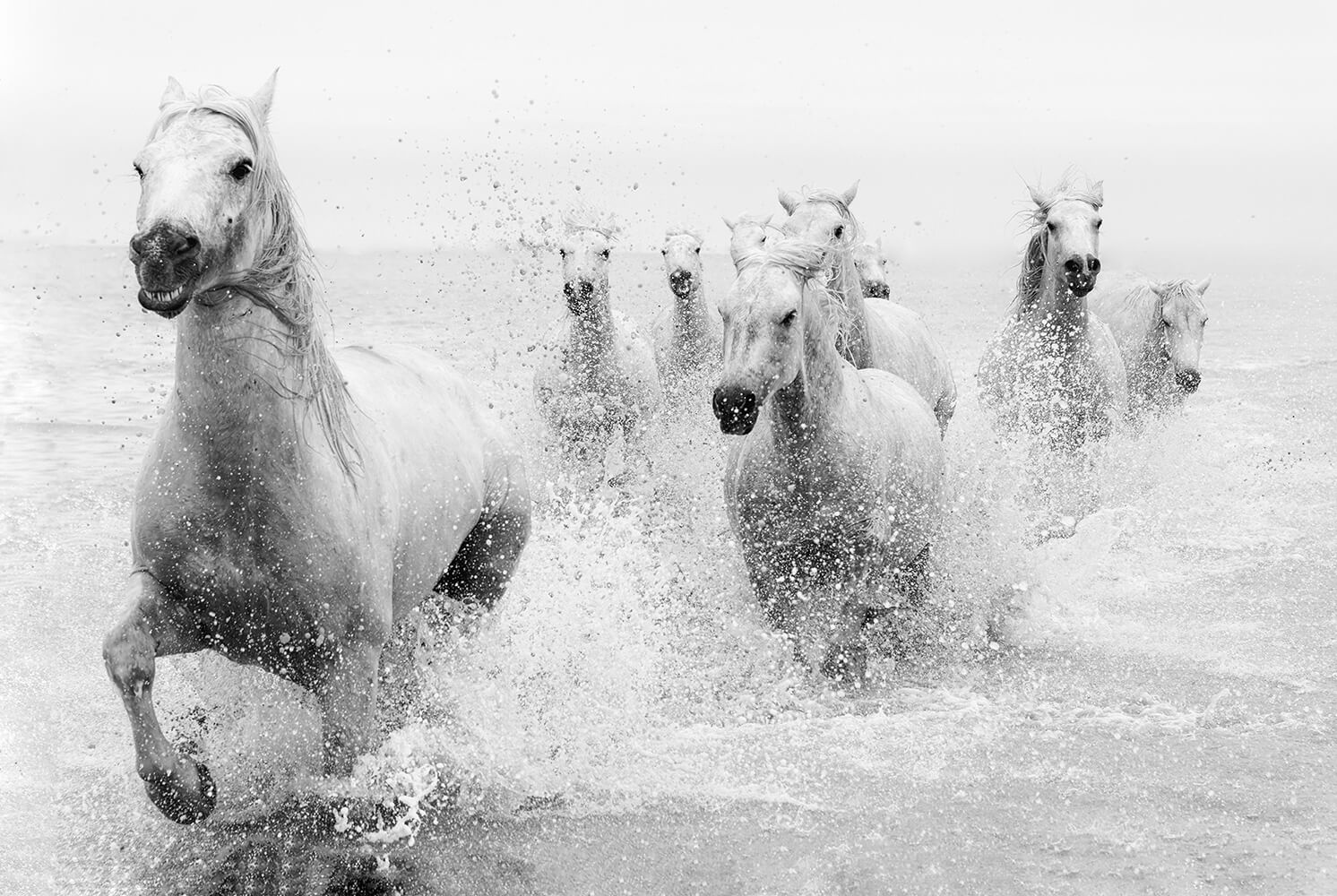
“An exquisite, exhilarating image that captures the powerful beauty of horses in motion – muscular and elegant. Tightly framing them charging towards the viewer in formation, Marketa throws us into the heart of the action. It’s dynamic of course, but there’s also something serene about the image – emphasized by her choice of pale monochrome.” – LIFE FRAMER
Photographer statement – “Horses in water. These are Camargue horses galloping through the low sea water – the determination to get onto dry land is there.”
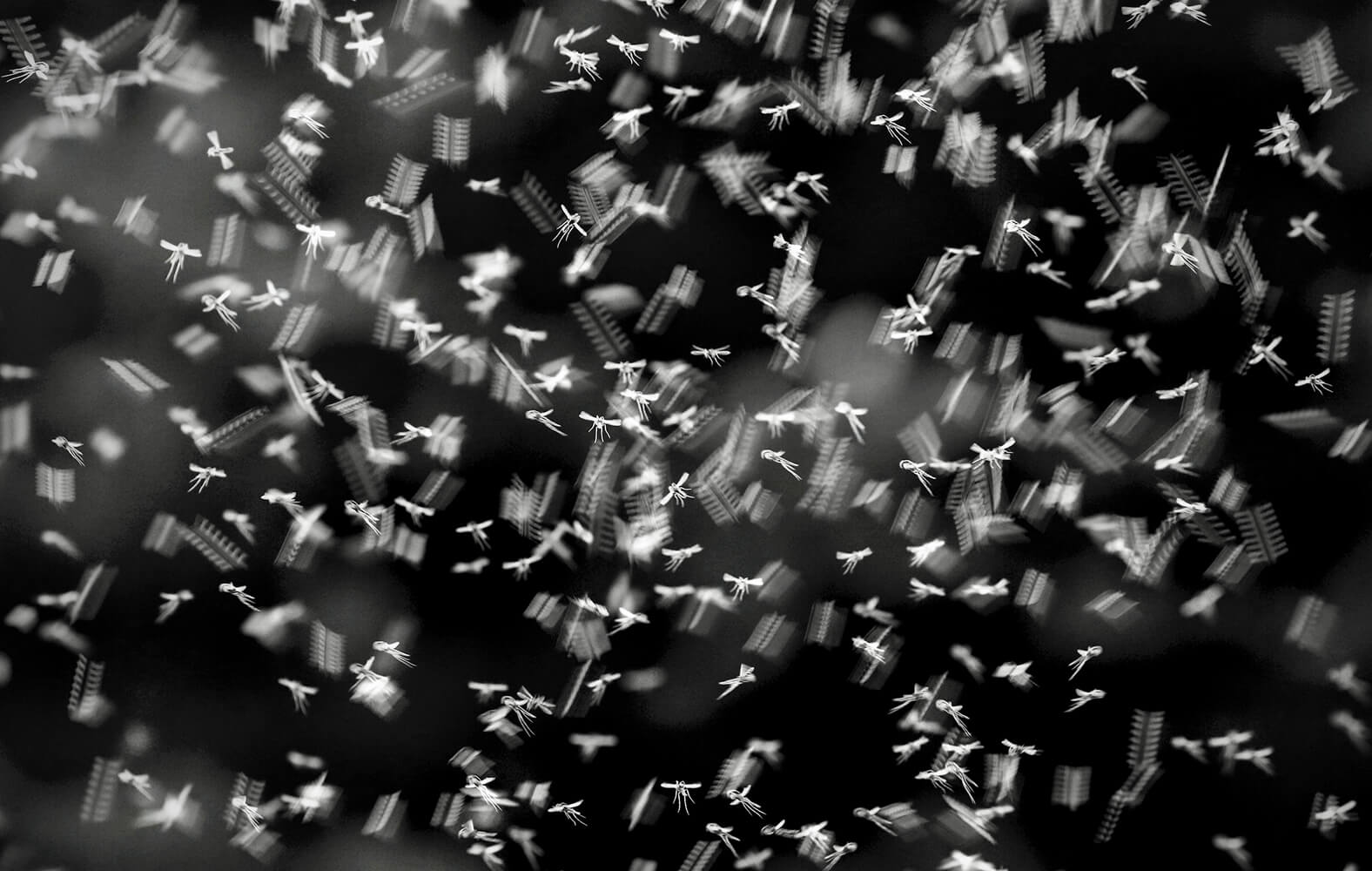
“Mosquitos are a species we generally do our best to avoid, but Veronika dives into the heart of the swarm to create something artistic and unexpected. Like looking up into a snowstorm we’re confronted by movement and detail – some insects crisply framed, others a blur of motion with their beating wings creating repeating, fern-like patterns. It feels three dimensional and urgent. A wonderful shot.” – LIFE FRAMER
Photographer statement – “In the kingdom of mosquitos. It was a dangerous but I managed to enter this flock of mosquitos and take some shots using a panning technique.”
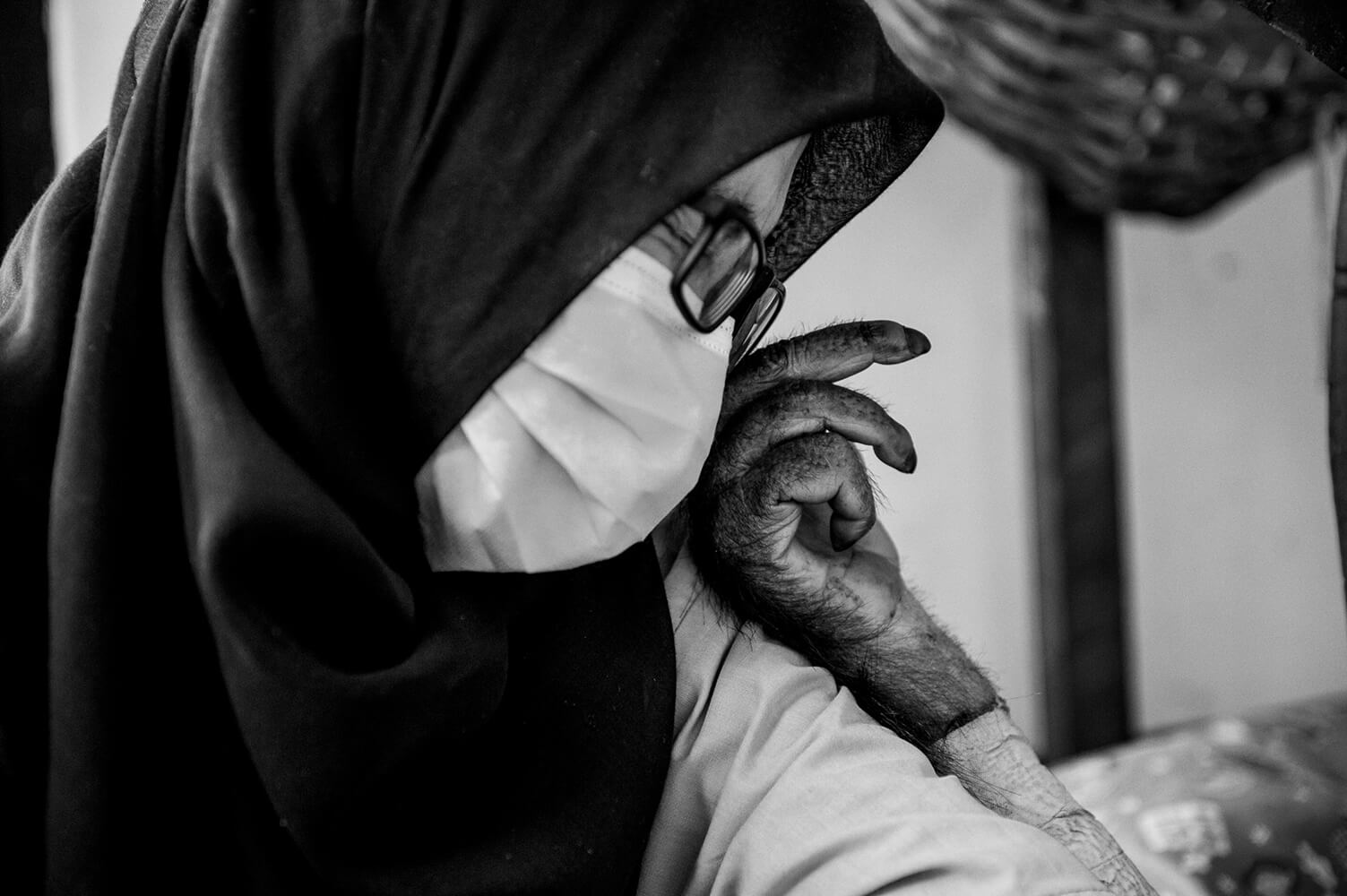
“Dilla presents a simple but highly affecting moment between nurse and orangutan – a poignant example of the compassion in people, and the powerful bonds that can form between man and animal. Tightly cropping the scene, we are drawn fully into the connection between them, nothing else in the world mattering but to care and be cared for. A small, but significant moment.” – LIFE FRAMER
Photographer statement – “Thank you Nurse. A baby orangutan is sick with tummy ache and therefore has to stay put in the clinic to be constantly monitored by the dedicated vet and nurses at the rehabilitation centre. Upon one of the nurse’s visits to the patient’s bed she is greeted with a loving touch on her cheek.”
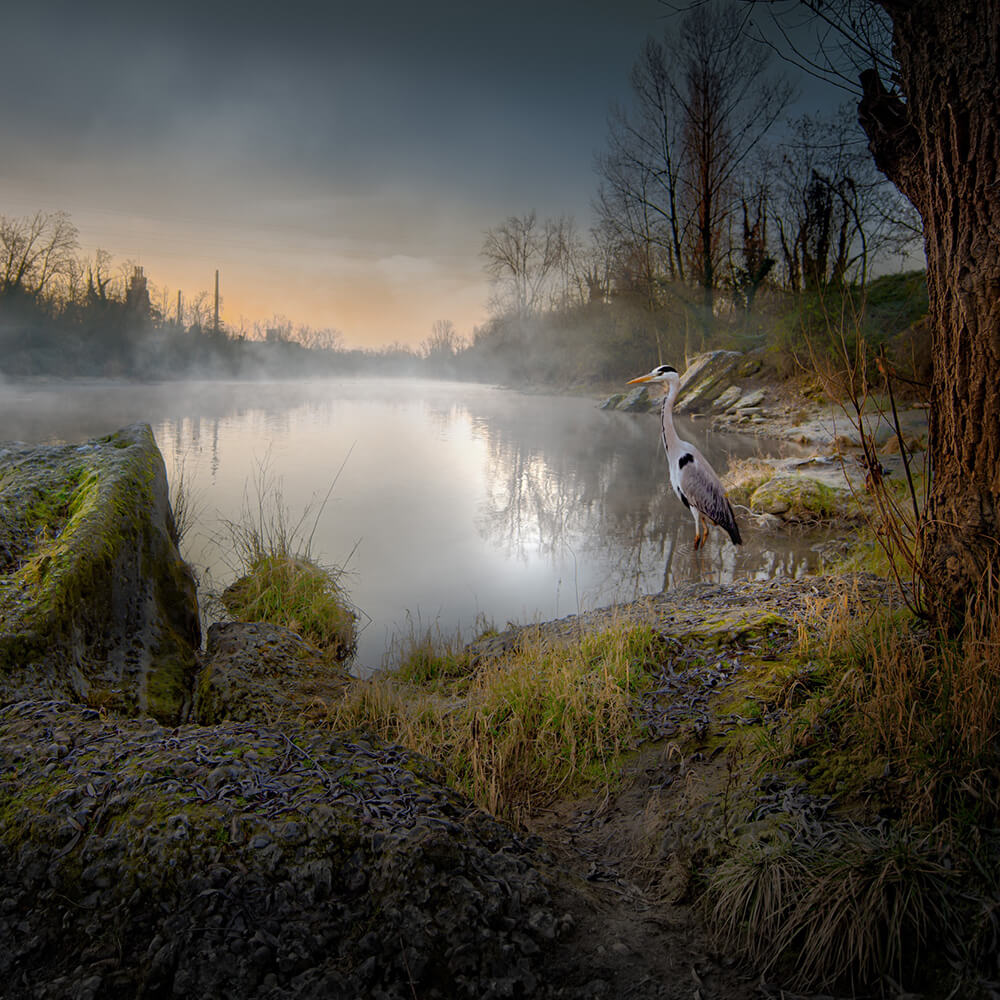
“Walter captures a tranquil and highly atmospheric image – the tree line and foreground rocks creating a natural frame which the heron looks into, surveying its domain. With the low light and hanging mist muting the colors of this lakeside scene, you can sense the silence and Walter’s efforts to not disturb it. We’re witnesses to a privileged moment.” – LIFE FRAMER
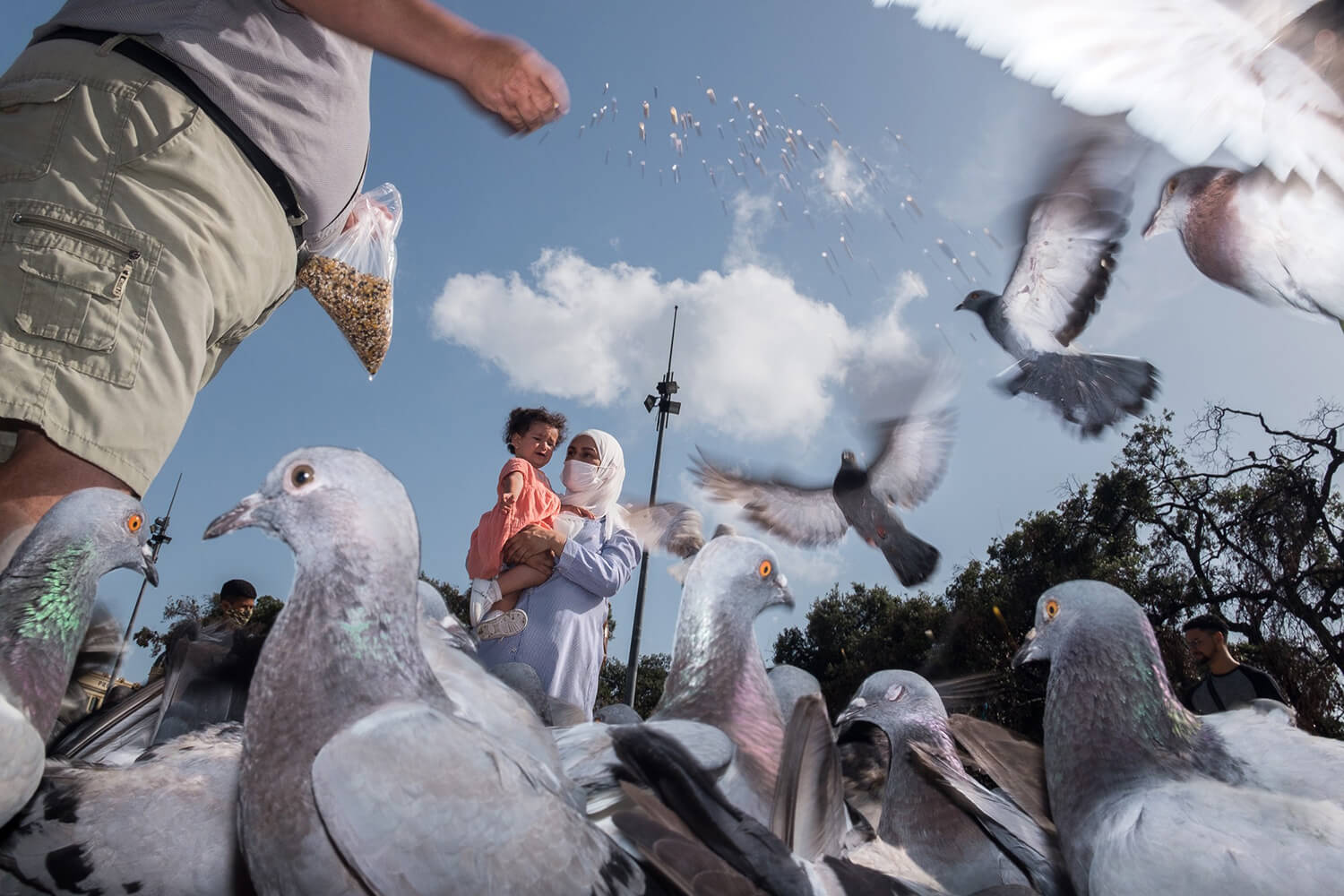
“Presenting the viewer with a literal bird’s eye view, Céline creates an imaginative viewpoint on a mundane thing, finding an order in the dynamism of the moment. It brings a new perspective to a much maligned animal with whom we share our urban realm, and who do their best to exist in our unnatural world. A thoughtful and creative project, reminding us that you don’t need to travel far to find interesting stories.” – LIFE FRAMER
Photographer statement – “Feral doves (or you might know them as pigeons). In our western cities, they are often considered as a plague. They’re so numerous, so well adapted to the urban décor we, humans, built. Most of us (I personally do) feel they are dirty, and a germ vector. Yet, what is this strange and paradoxical urge I observe to feed them day after day? What is this fascinating and universal reflex for any kid to run through the flock of them, have them fly away and watch them almost immediately come back to the same spot and go on picking? This (still no name) project is about that attraction / repulsion relationship between urban humans and pigeons.”
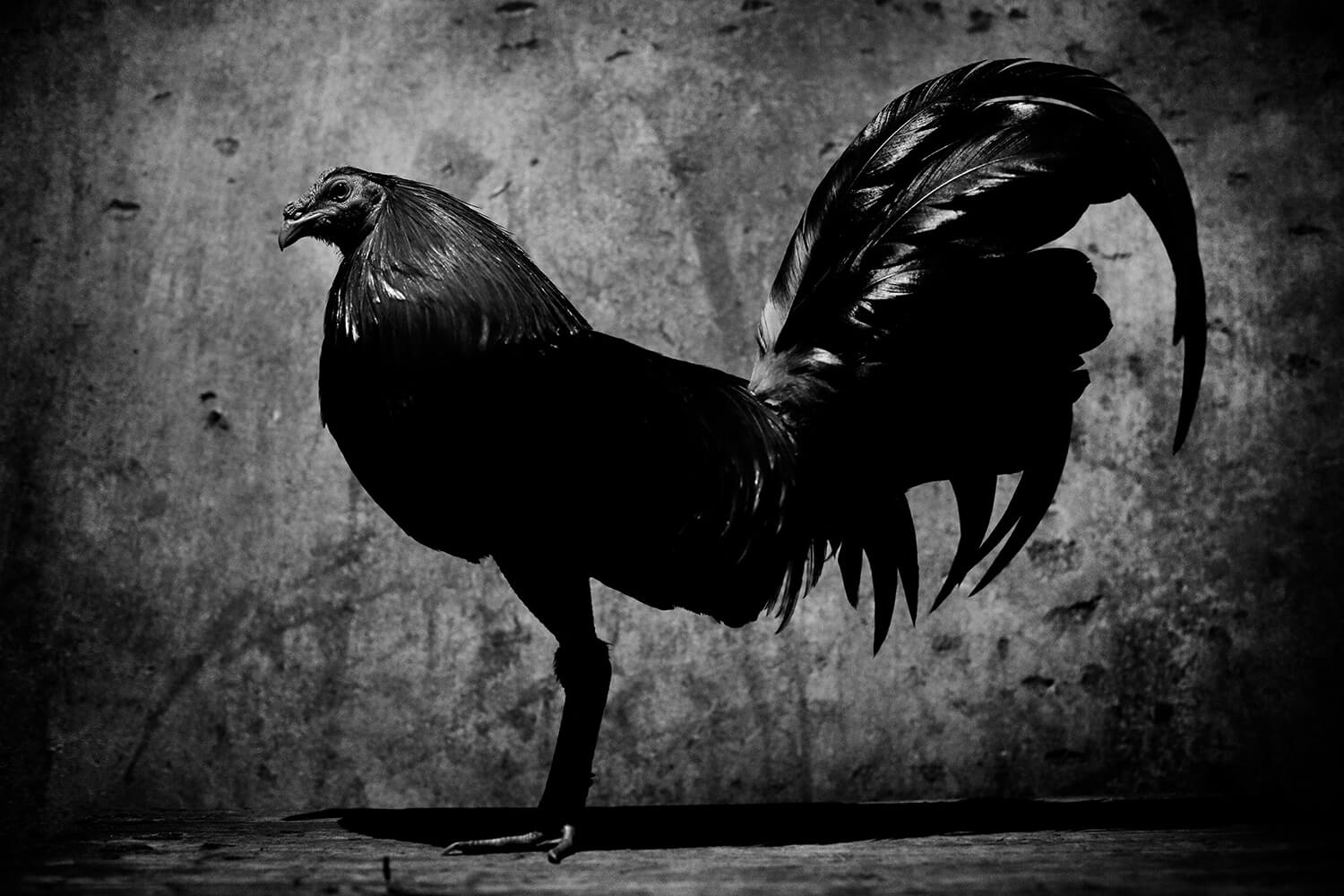
“A dignified portrait of a creature dealt an undignified hand. This fighting rooster stands tall and noble, the background symbolic of the violence – the scrapes and scars – it will have endured and been marked by, and its stance perhaps symbolic of moving on to a brighter future. It is a tragedy that this blood sport endures in many parts of the world.” – LIFE FRAMER
Photographer statement – From the series Gallero. “Within a great variety of breeds, among the roosters, the most numerous bird on planet earth, is “The fighting cock”. This species is characterized by having a more aggressive behavior than the rest of its congeners. This aggressiveness manifests itself at an early age. The attitude of the fighting rooster in a confrontation is different, since they come to give up the survival instinct, maintaining their combative disposition indefinitely.
This is a project with a very personal approach, and it is not intended to describe cockfighting at all. My intention is deeply poetic and dramatic, often loaded with symbolism. The language is not explicit but it is emotional, you can feel something violent but without showing violence in an obvious way. Visually, the work is made up of black and white images in addition to some red images. The red images have been made with a continuous red light. This has a double function in the project that justifies its use.
The red light comes from the type of light bulb used by the cockerels for the maturation of the eggs and the young of the roosters when they are very few days old and care is very necessary. The color red influences as a visual stimulus, in the appropriate sense of life as something positive, but also in a balance that is violence, passion and death; something that is implicit in the figure of the rooster.”
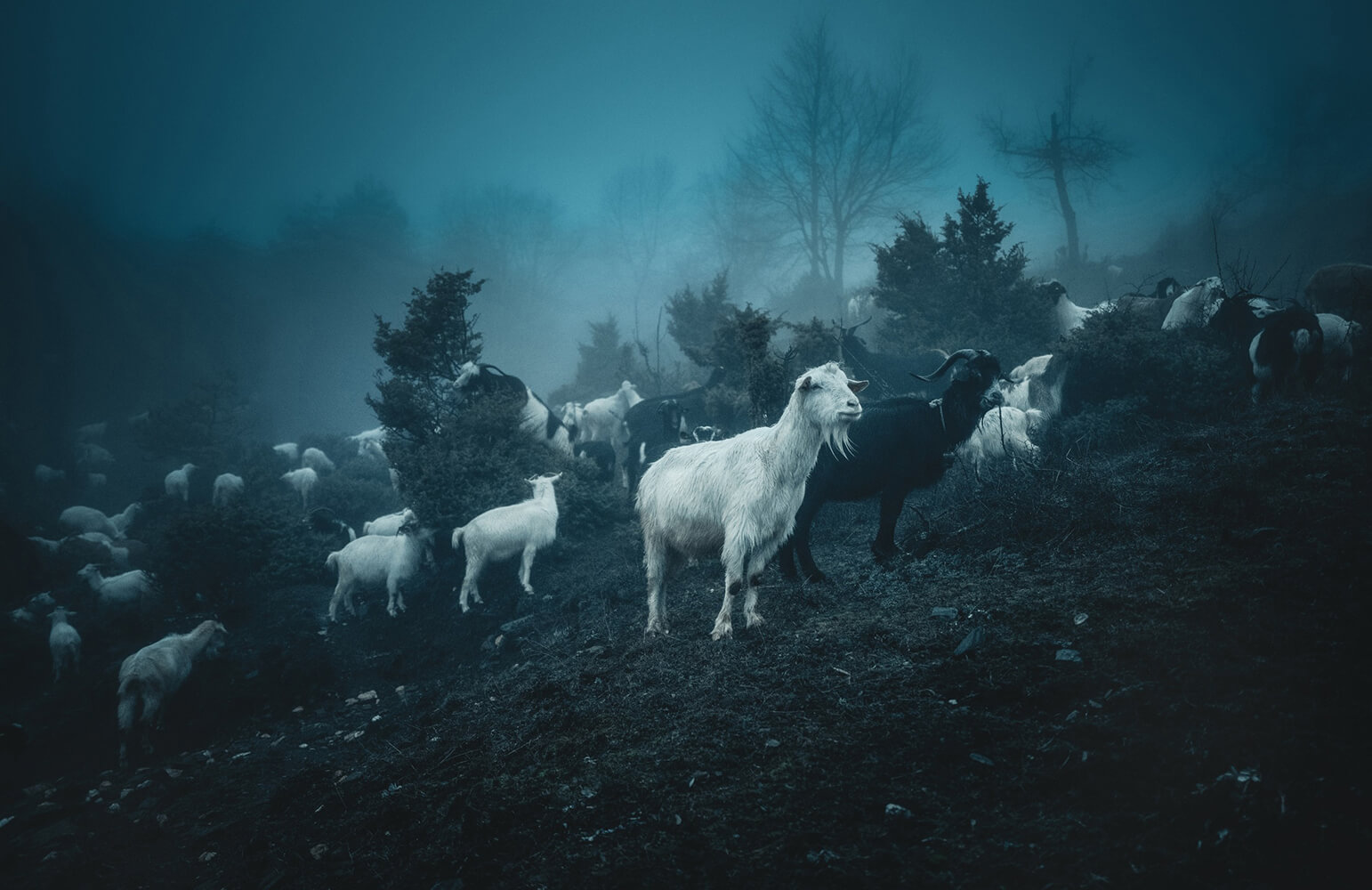
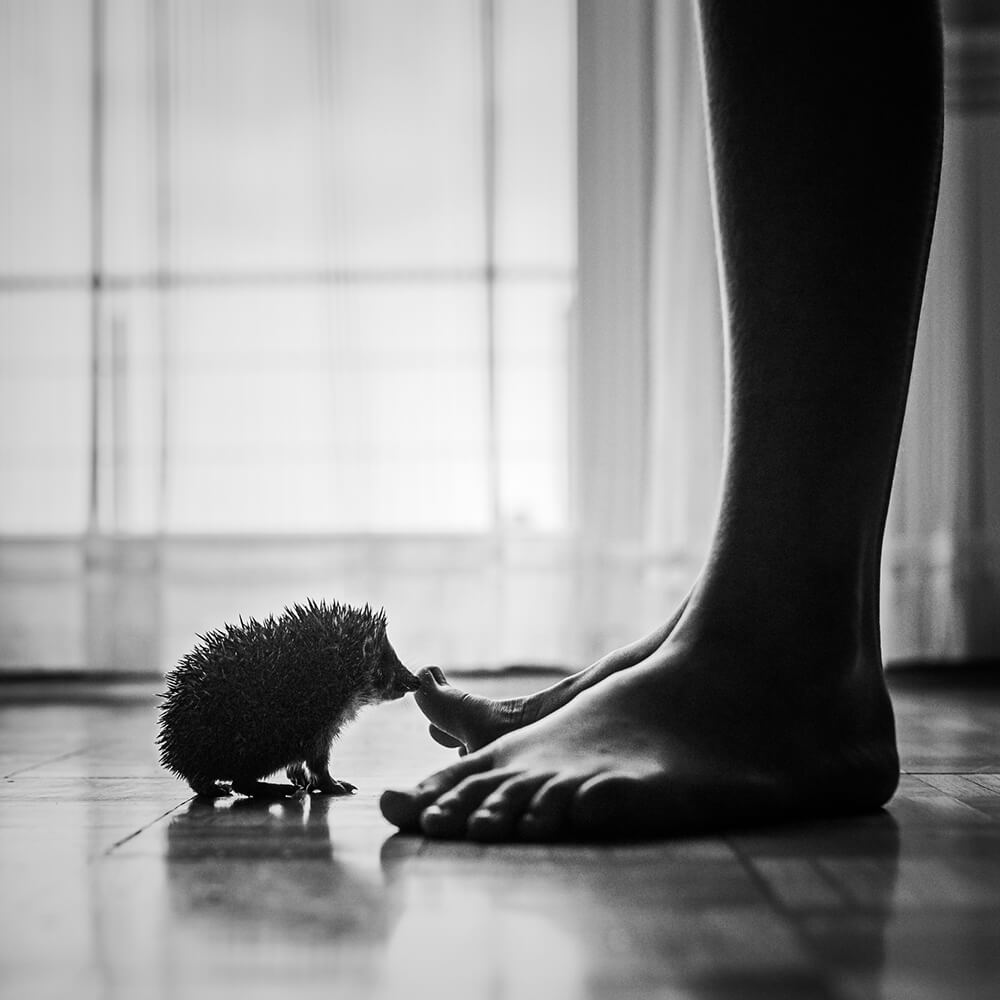
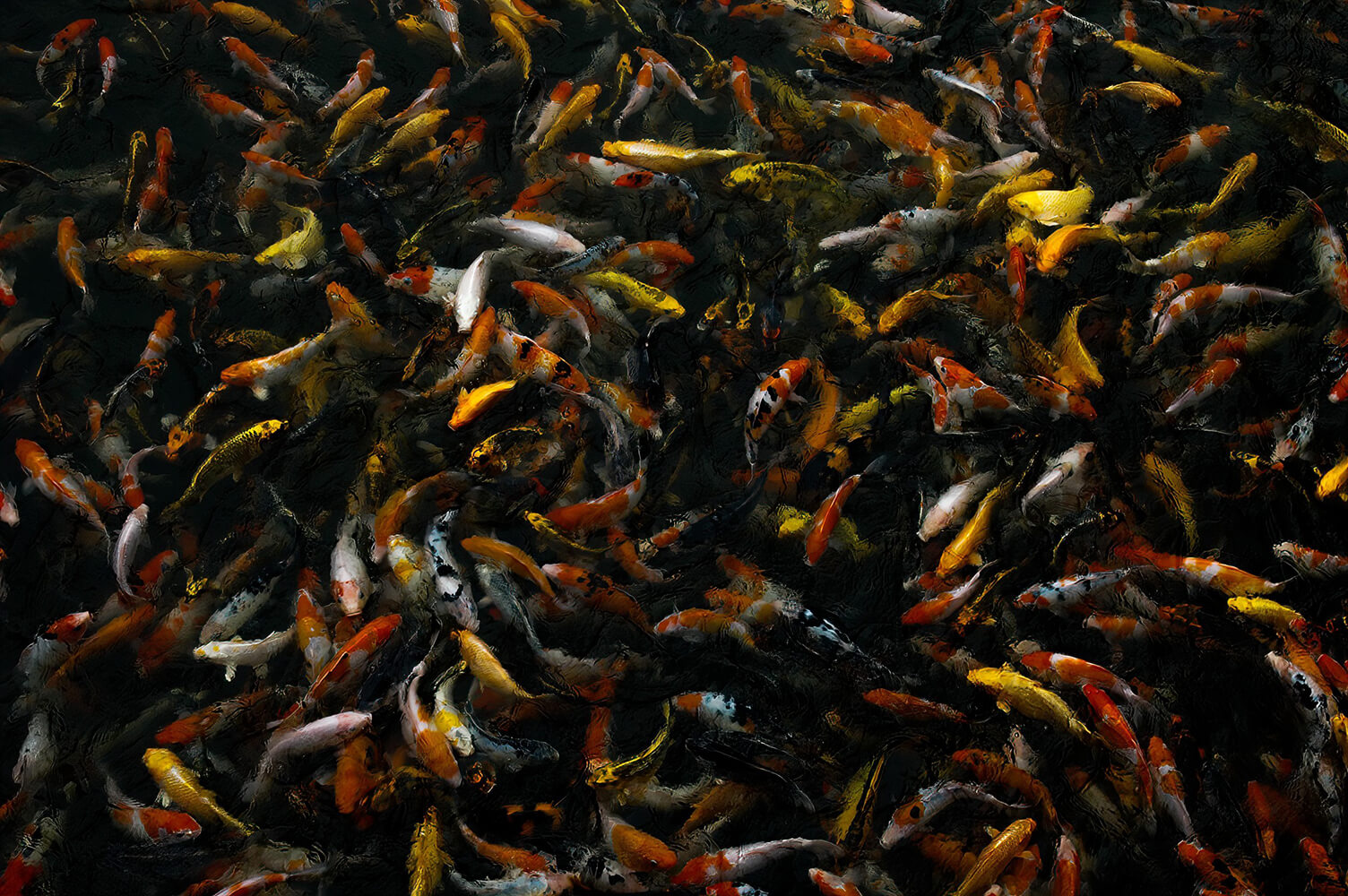
“With its swathes of bright color against dark, oily hues, this image has a painterly quality – a gorgeous, artistic document of the dense chaos of carp vying for food. Creating an almost abstract pattern, it’s the kind of image that would look incredible displayed at large scale.” – LIFE FRAMER
Photographer statement – “These carp were in a pond in Malaysia. What was remarkable was the way that they chased after food. They created patterns in response to where food was thrown.”
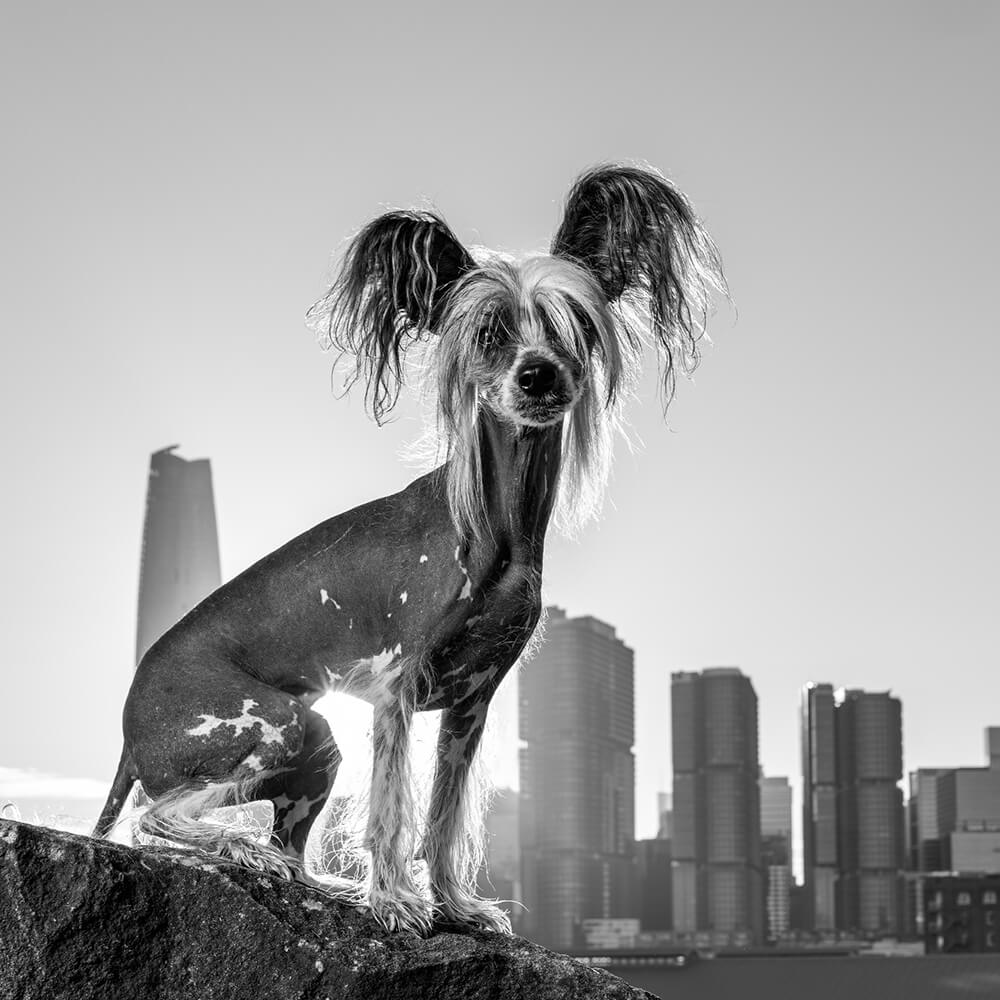
“This dog oozes character, with its outsized ears, compact face and distinctive hairstyle accentuated by the backlighting of the low sun. Shooting against a city skyline, Theresa cleverly likens how far this animal has been genetically engineered from its ancestors with how far we’ve engineered our urban environments. Building the frame with strong diagonal lines, it’s a well-constructed and endearing image.” – LIFE FRAMER
Photographer statement – “This portrait of Calvin, a Chinese crested dog has been composed to illustrate how far the species Canis familaris, or domestic dog, has evolved from their common ancestral wolf population. Pyrmont, NSW Australia.”
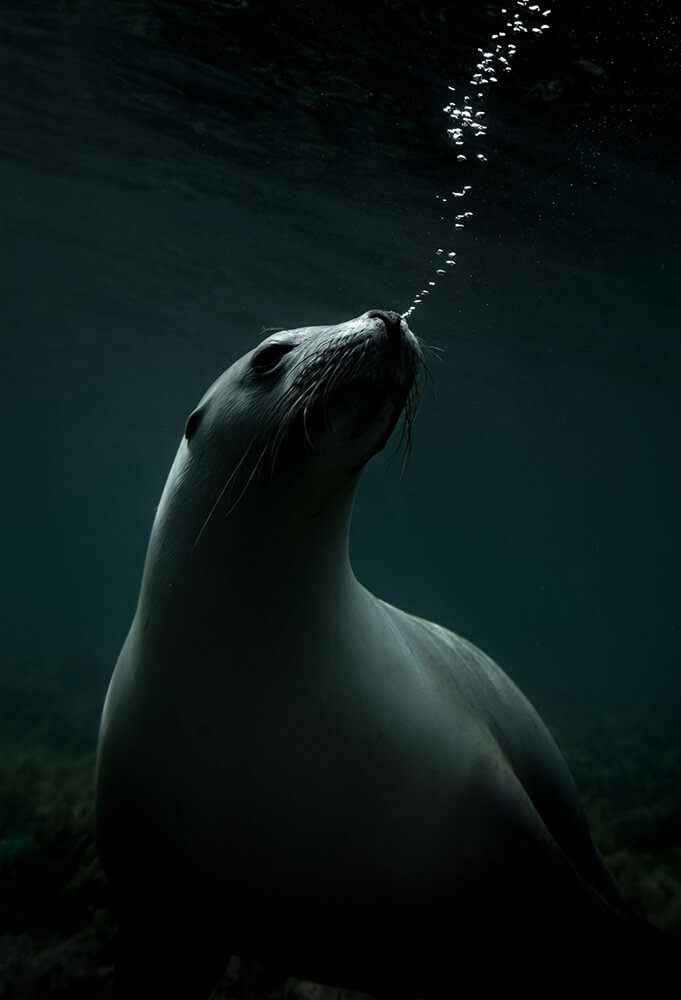
“Matt’s statement provides as eloquent an analysis of this image as we could hope to make – a stunning shot of a sea lion exhaling a trail of bubbles to the ocean surface. With its features picked out in the soft light against deep, velvety blue hues, and the continuous diagonal line of its neckline and the bubbles, this feels more like a formal portrait than a candid capture. A perfectly realized image, creating a moment of affinity with this majestic creature.” – LIFE FRAMER
Photographer statement – “Bubble Lion: I’ve watched them move. The way they interact, the way they play, the way they express emotion. Before I came to the moment I already knew what I wanted; silky smoothness of fur, the humanistic expression in their eyes but above all, the bridge between air and water, the trail that connects them to the surface. A small moment in the underwater world where they feel understood and appreciated. Port Lincoln, South Australia.”
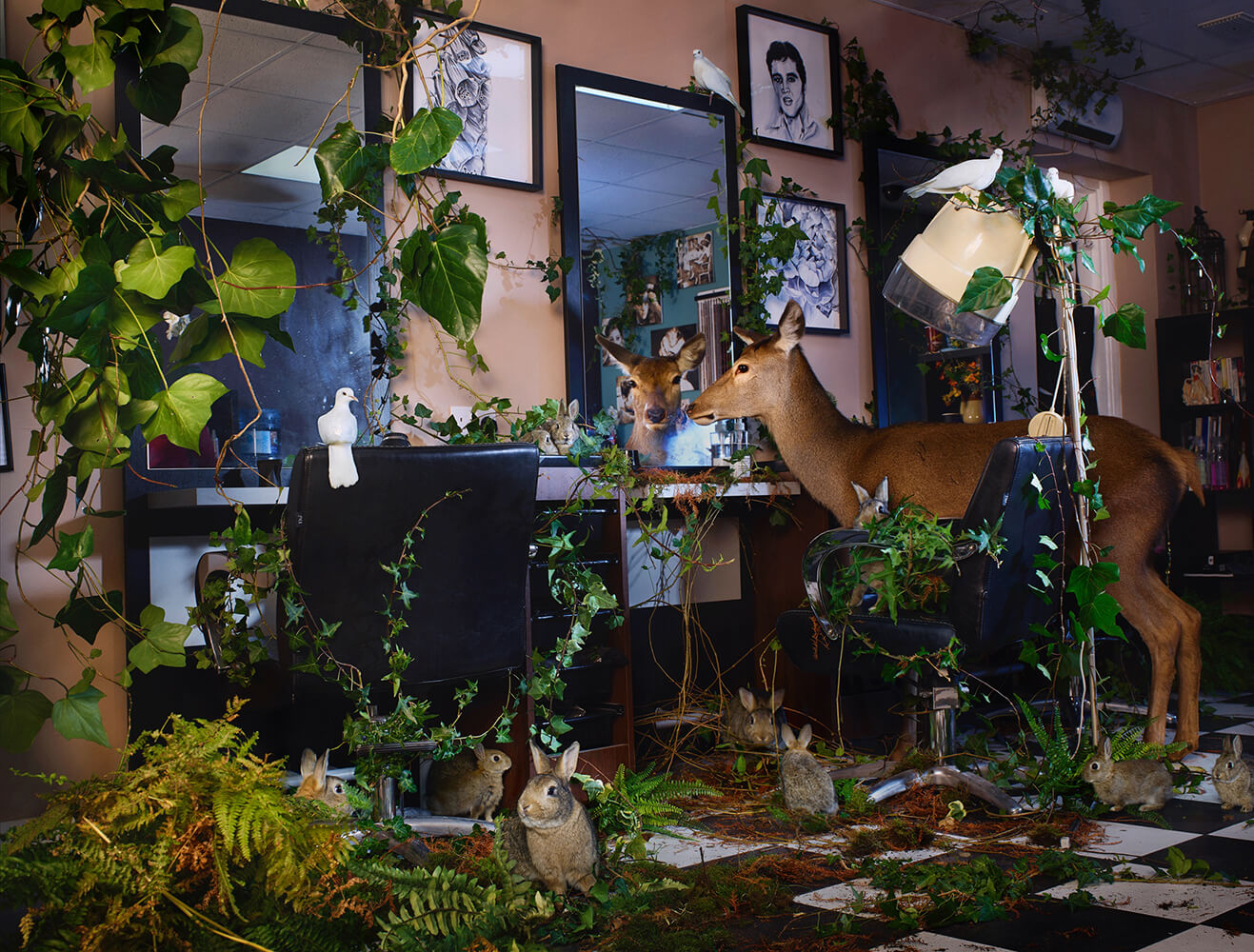
“How long would it take for nature and wildlife to reclaim our human spaces if we were to suddenly disappear? Inspired by lockdown and thoughts of “our transient existence on this planet” it’s a question Jo asks in this wonderfully realized image. Dense with detail to unpack – birds, hares, foliage and of course this doe eyeing us through the salon mirror – it’s a great idea that she brilliantly executes. An arresting image that was no doubt a joy to create.” – LIFE FRAMER
Photographer statement – “Doe at the hairdressers. An image in a series inspired by lockdown, the power of nature and our transient existence on this planet.”
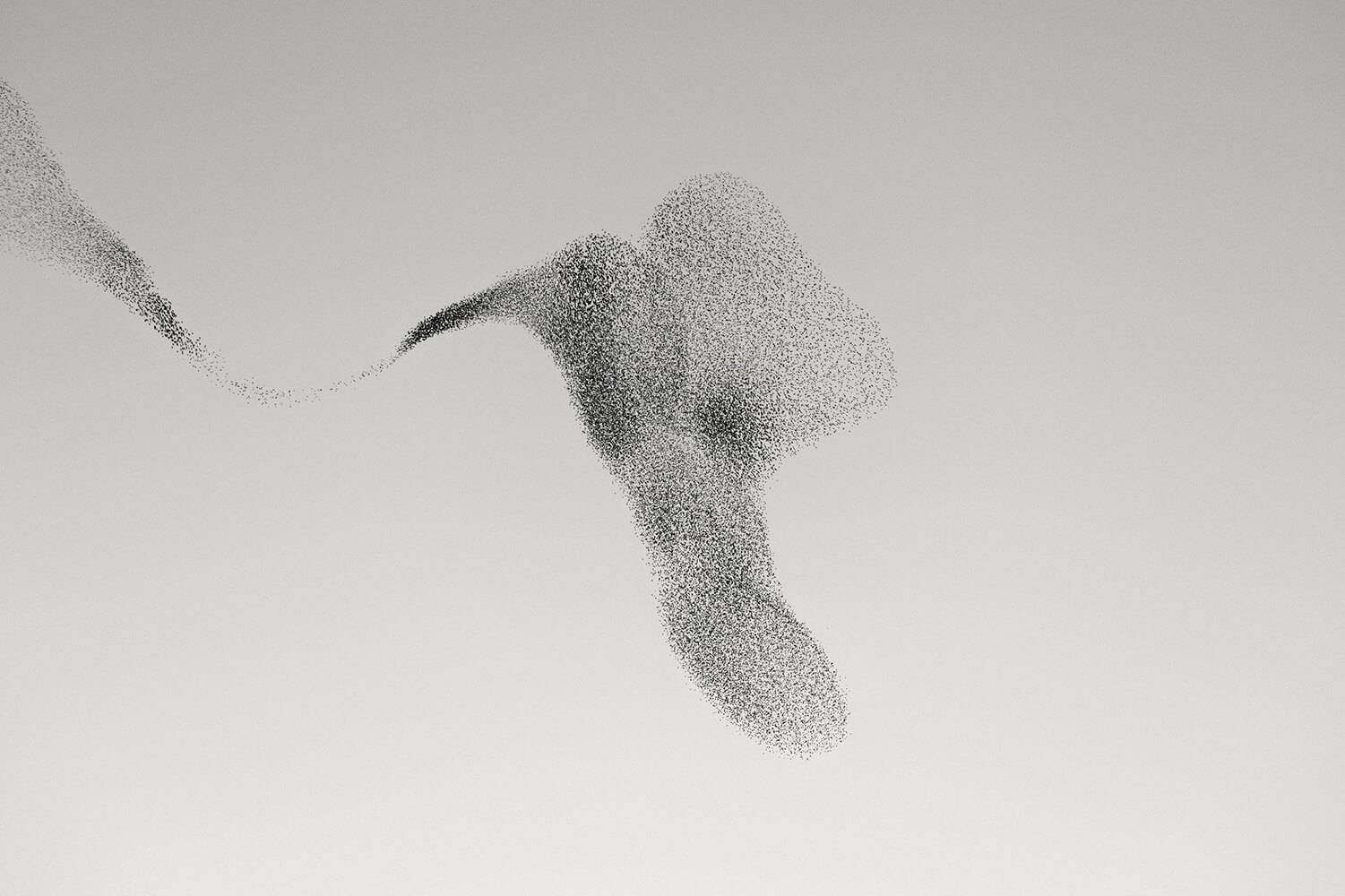
“Daniel aptly describes the murmurations of starlings as “an elegant dance”. There’s certainly something mesmerizing in how these birds move – a vast, impromptu choreography, each bird part of something vastly bigger than themselves. The colossal organic shapes that form have an inherent beauty, but here we see an unexpected coincidence – the murmuration forming the shape of a bird itself. Shot against a flat, cloudless sky the resulting image is undiluted. Sparse and beautiful.” – LIFE FRAMER
Photographer statement – From the series Murmurations. “The term “murmuration” comes from the fact that thousands of wings flapping at once give a murmur-like sound. Grouping together offers safety in numbers – predators such as peregrine falcons find it hard to target one bird in the middle of a hypnotising flock of thousands. The starlings also gather to keep warm at night and to exchange information, such as good feeding areas. I always search where their roosting site could be, this is where they perform their wheeling stunts before they roost for the night. There is no leader in a murmuration, the flock behaves as one single entity. To stay united through the different escape patterns, each bird tracks and mimics the behavior of seven neighbors. The group can adapt quickly by focusing on a fixed number of birds, becoming dense or sparse, splitting and changing shape. Starling murmurations occur mostly at dusk, when the birds gather together for the night. Nevertheless, I have photographed the starlings many times also in the morning, when they fly away in different groups. Due to the large size of their flocks, starlings don’t hang out together all day. Just before dusk many small groups of starlings from the same area come together to roost for warmth, socialization, and safety. It is always beautiful to see how many little groups gather in a very large group. The biggest group that I saw had 3-4 millions starlings. It is always fascinating to see how they avoid hitting each other. With these series I want to reveal the hidden beauty of common things shown from an unusual perspective of an elegant dance.”
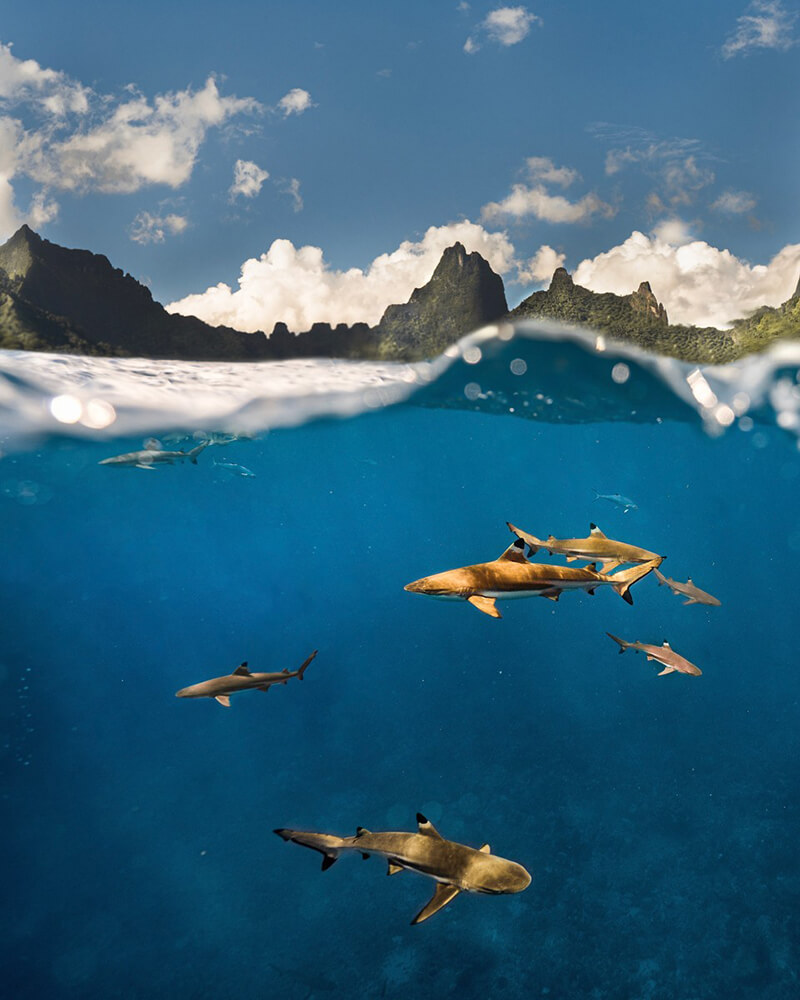
“Getting an over/underwater split frame like this to work is harder than you might think. Matt does it brilliantly though, showing us these sharks lit by the bright sun, and the wider environment they inhabit. The jagged mountainscape in the background, echoing the fins of the sharks, is a nice touch.” – LIFE FRAMER
